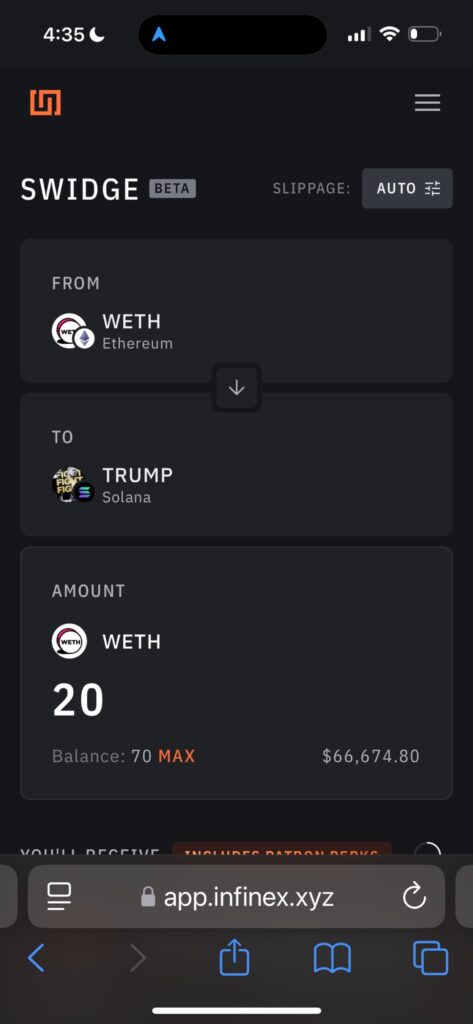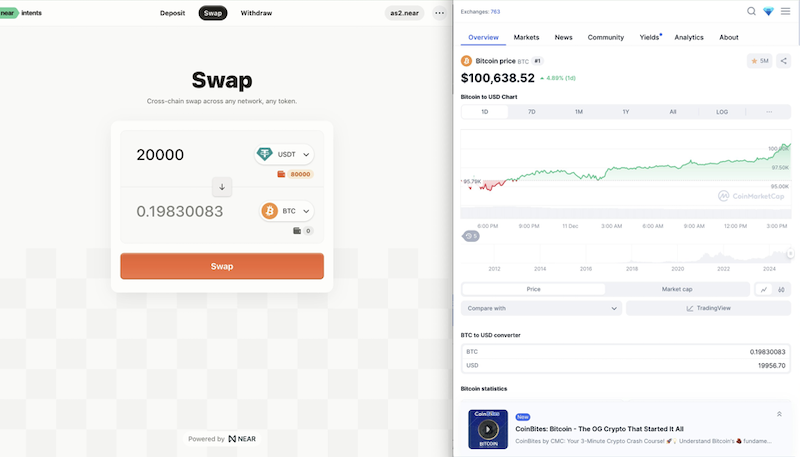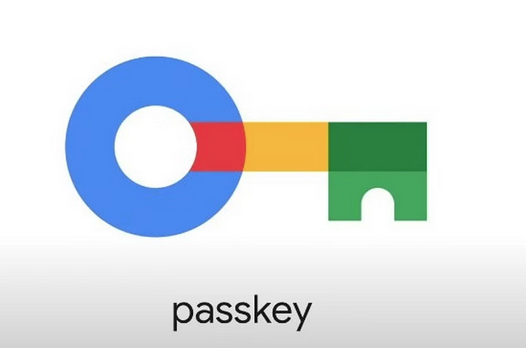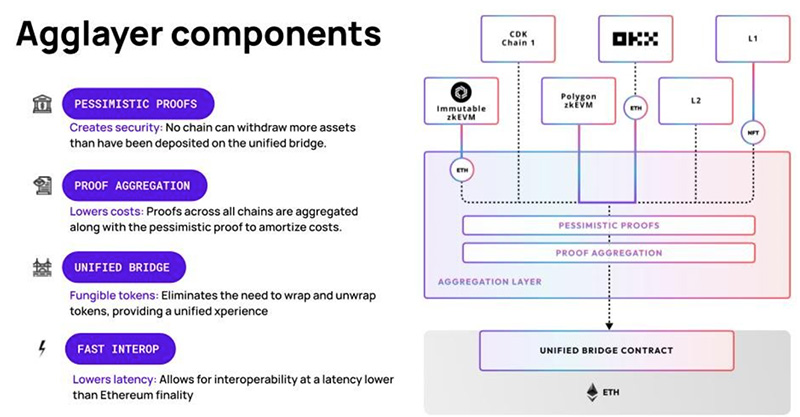They solved crypto’s janky UX problem. You just haven’t noticed yet
2025.01.22 11:17
|
|
For the past 15 years, crypto has struggled to gain mainstream adoption because it’s difficult to use. The benefits of decentralized and uncensorable money are clear, but the janky user experience posed a very high bar to entry.
Working out how to use seed phrases and hardware wallets, the gut-churning unease felt in the 15 minutes it takes for a large amount of crypto to land in a 34-character address that may have been mistyped — the UX sucks for ordinary people.
And once you’ve figured out Ethereum or Bitcoin, there are a million other blockchains, each with its own unique rules and features, with no easy way to transfer assets or actions between them.
But 2025 is the year crypto finally becomes user-friendly.
The iPhone moment for crypto UX
Nemil Dalal, product lead of Coinbase Developers Platform, says the technology is improving so fast you’re “just not going to recognize crypto in like, two, three years’ time; it’s gonna be completely different.”

 Nemil Dalal at the Every Agent Needs a Wallet event. (Fenton)
Nemil Dalal at the Every Agent Needs a Wallet event. (Fenton)
“It feels like we were building mainframes back in the day, and now it’s like our iPhone moment. All these dreams we had, [that] we tried for many years that just didn’t work, right now, suddenly are possible.”
Today, a single click can launch a complicated crosschain transaction that settles almost instantly. Users can log in to a crypto wallet or sign up for a service using just a fingerprint linked to a Gmail address. The new technology enables decentralized apps to feel like Coinbase and enable you to trade any coin or use any protocol on any chain.
The magic of intents, passkeys and chain abstraction means new users coming into crypto will have a totally different experience than in the past. All of the complexity is being abstracted away under the hood.
Abstraction as a concept in crypto UX
The big advances are often a form of abstraction — whether that’s chain abstraction, account abstraction or just making life easier for users. Although it sounds like jargon, abstraction is a well-known concept in technology.
At its simplest, it just means hiding all the complicated bits from the end-user, who can just click on a button to automatically perform a series of actions that would require a dozen painstaking steps to do manually.
A coffee machine is a real-world example. Making coffee requires roasting and grinding the beans, heating up the water or milk, measuring the right amount of coffee grounds into the group handle, tamping it down and so on. With a coffee machine, you stick a coffee pod in the slot, press a button, and the machine takes care of the rest.
This is finally happening in crypto.
“What the industry needs and what users ultimately want are simple, seamless interfaces for sophisticated use cases,” says Dean Tribble, CEO of Agoric Systems.
Read also
Features
How to protect your crypto in a volatile market: Bitcoin OGs and experts weigh in
Features
Building community resilience to crises through mutual aid and Web3
Intents: Crypto’s one click solution
Over the past year or two, a design philosophy around intents has become popular among blockchain devs. It simplifies the user experience by enabling people to express a goal without needing to understand the technical stuff.
An analogy in Web2 is the experience with online shopping. Research suggests that up to 70% of shopping carts are abandoned because the checkout process is too complicated, and each additional click increases the likelihood. After Amazon introduced one-click ordering, individual customers bought 28.5% more often, and revenue surged by 838% in a year.

 Intents are a simple concept. (Illia Polosukhin, X)
Intents are a simple concept. (Illia Polosukhin, X)
Intents are the Web3 version of one-click checkouts. On the latest protocols, you can just click a button (expressing your intent), and then a permissionless network of third-party fillers or solvers makes it happen.

 Kain Warwick’s feet aren’t really that big — it’s a wide-angle lens. (Fenton)
Kain Warwick’s feet aren’t really that big — it’s a wide-angle lens. (Fenton)
“Users express high-level goals, such as ‘Swap my BTC for ETH and stake it,’” explains Tribble. “Multiple parties — solvers — determine and execute the best paths to fulfill those goals.”
Kain Warwick, who built one of the most sophisticated but noob-unfriendly DeFi projects in history with Synthetix, had an epiphany when he realized most users just want stuff that works. His new project, Infinex, takes advantage of all the latest UX developments in an attempt to become a one-stop shop for crypto on all chains.
He explains that intents mean that users don’t have to even know if the transaction they want to do involves a centralized exchange or an onchain order book — the solvers will figure it out.
“The order will get routed through the optimal place,” he explains.
“So, you as a user say, ‘I want to leverage long Pepe’; okay, we can send that out to solvers, and they will go and find the place that will give you the lowest funding rate, best execution, best fill on that trade. And then we’ll bring that trade back, and it’ll be sitting in your Infinex account, and when you want to unwind it, you click, go back out to the solvers, and unwind it.”
Chain abstraction makes cross chain seamless
Intents are one path to chain abstraction, but there are a bunch of others, says Tribble.
“Various approaches to chain abstraction have emerged, many of which are complementary, including intents, interoperability standards, wallet-centric solutions, etc., all designed to streamline workflows, enhance the user experience or sometimes do both.”

 Swidge was offering cross chain swaps into TRUMP within 90 minutes of launch (Kain Warwick)
Swidge was offering cross chain swaps into TRUMP within 90 minutes of launch (Kain Warwick)
Chain abstraction means users don’t have to worry about what network they are using and can easily trade crosschain. Multichain smart wallets enable users to keep a jumble of different tokens from different chains in the same smart wallet.
On Jan. 15, Infinex launched the Swidge app (meaning swap and bridge) for Patrons, which allows users to swap between 1,000 tokens in the Solana and Ethereum ecosystems in about a minute, without paying gas fees.
Under the hood, it’s powered by Solana DEX aggregator Jupiter Exchange and the crosschain protocols Mayan Swap and Li.Fi, both of which use intents-like designs.
But that’s just the beginning because Infinex has partnered with Near blockchain to implement its chain abstraction and chain signatures technology. That will allow it to add trading, custody and other services for legacy chains like Bitcoin and XRP later this quarter.
Near itself unveiled the beta version of Near Intents in December, which allows users to plug in their MetaMask and easily swap between 30 tokens on 10 blockchains, including Bitcoin, Ethereum, Arbitrum, Base, Solana, Near, XRP and Doge. Intents have the potential to connect any chain as well as fiat and is powering 15 projects so far.
Near founder Illia Polosukhin was a co-author of the seminal Google Transformer research, and the project is heavily focused on AI. Near Intents has been designed to enable agents to negotiate and pay for tasks with one another in any currency or any chain, or even book flight tickets or reorder your favorite groceries using fiat when you run out.
Within a couple of hours of TRUMP launching this week, both Near Intents and Swidge were offering cross chain swaps to enable users to buy the coin.
Across Protocol, which now provides bridging for Uniswap, launched its intents-powered bridging with v3 in February 2024. Other protocols and projects working onchain abstraction tech or networks include Socket Protocol, Agoric and Everclear.

 Near intents in action. (Alex Shevchenko/X)
Near intents in action. (Alex Shevchenko/X)
Passkeys: Crypto wallet security made easy
Another massive increase in usability for ordinary people is the use of passkeys to access crypto accounts. New users can sign up to a crosschain platform like UniversalX or Infinex in about 20 seconds using an existing Web2 account from Gmail, Apple or Facebook.
Passkeys use the biometrics on your phone to access cryptographic keys stored on your device’s Trusted Platform Module. While not as safe and bombproof as a hardware wallet, it’s a million times easier for newcomers.

 Passkeys are better than passwords. (Google)
Passkeys are better than passwords. (Google)
“You can log in from your MacBook, from your Windows machine, from your Android phone, and it will feel the same,” says Warwick. “You don’t need to move a seed phrase. Or do anything weird; you literally just log in. It’s a web application, and all your crypto is there.”
The danger with passkeys is that it’s possible to lose access to your crypto if you lose access to your device. But there are ways to mitigate against the risk. On Infinex, for example, you can add a backup wallet address that your funds will be sent to if you brick your phone.
Warwick says the industry wasted years trying to educate users about “why seed phrases were important to chisel into a stone and bury in your backyard,” but “it didn’t work.”
“We have the technology now, and we need the technology plus the right approach. And the right approach is to look at what a user wants to do and let them do it with as minimal friction as possible.”
Blockchain interoperability unifies crypto
This year will see interoperability on Ethereum L2s improve greatly, thanks to the adoption of new ERC and RIP standards that enable intents and trustless execution across chains. Jesse Pollak from Base told Magazine at Devcon that he believes most of the issues with siloed L2s will be solved within about six months.
“It’ll basically, like, disappear, and it will no longer be all these fragmented L2s. It’ll instead just be your wallet that lets you work everywhere.”
There are a variety of other interoperability solutions out there, approaching the problem from different directions, including Optimism’s Superchain concept, LayerZero’s bridging technology, Wormhole’s crosschain network of nodes and Chainlink’s crosschain messaging and token standards.

 The Agglayer: One layer to rule them all. (Polygon)
The Agglayer: One layer to rule them all. (Polygon)
Polygon’s Agglayer aims to aggregate all smart contract L1s and L2s with a neutral, crosschain settlement layer that unifies liquidity and users and posts finality to Ethereum. It’ll start integrating chains this quarter and launch fast crosschain transfers beginning around March or April.
Polygon co-founder Brendan Farmer says it’ll make intents and chain abstraction work more effectively and get rid of the need for wrapped tokens.
“It’s this experience that feels like using a single chain, even as you’re traversing boundaries between different chains.”
Safe Wallet is also launching SafeNet this year, which aims to replicate Visa’s transaction guarantees and speed in the blockchain world by using a processor network to handle crosschain transactions.
Available initially through Safe Wallet, SafeNet allows users to merge their different balances from different chains into one, and crosschain transactions should land within 500 milliseconds.
Read also
Features
Blockchain is as revolutionary as electricity: Big Ideas with Jason Potts
Features
What Solana’s critics get right… and what they get wrong
Web2 style functionality for decentralized crypto UX
This year is also expected to see the launch of Ethereum L2 MegaETH, which aims to hit 100,000 transactions per second, as well as Solana’s Firedancer client, which promises even more. Fast transactions combined with passkeys, chain abstraction, intents and interoperability bring huge improvements in usability for end-users.
One of the big UX improvements for decentralized exchanges has been the growth of aggregators like 1inch and Cowswap, which are front ends that allow users to find the best route for trades across different DEXs.

 Kain Warwick and Infinex chief technology officer Jed Watson at Redacted in Bangkok. (Fenton)
Kain Warwick and Infinex chief technology officer Jed Watson at Redacted in Bangkok. (Fenton)
The next evolution looks set to be user-friendly web front ends that allow users to access the best apps, protocols and services, including spot, perps, lending and borrowing from the one interface no matter what chain.
“DeFi is incredibly good at innovating. We’re not here to build protocols, right?” says Warwick. “You have things like Monad, things like MegaETH; you’ve got a bunch of L2s that are trying to be super low latency and enable things like onchain order books,” he explains.
“And there’s a bunch of stuff that’s coming. We’re here for it. We just want the best technology, and we will make that technology available to the users. Once some new chain with some new amazing hybrid DEX order book system launches, we can enable that.”

 ElizaOS is just one of a new breed of tokenized AI agents. (ElizaOS)
ElizaOS is just one of a new breed of tokenized AI agents. (ElizaOS)
The future is AI Agents
Coinbase’s Dalal believes that in the near future, you’ll be able to issue voice commands in natural language to AI agents or get them to perform actions like automatically rebalancing your crypto portfolio or executing a sentiment-based trading strategy.
But Polygon’s Farmer cautions that the technology is too immature to risk putting a consumer-grade agent in control of a wallet containing a lot of crypto right now.
“I do think that there’s this risk where unsupervised, or weakly supervised, AI agents that have control of money can sometimes behave in unpredictable ways. So, I think that we as an industry want to be sure that those AI agents will behave in a way that’s safe and consistent with what their people want,” Farmer says.
Subscribe
The most engaging reads in blockchain. Delivered once a
week.


Read also


Opinion
In crypto, no one cares who you are: Here’s why that’s a good thing
by
Lewis Hawkins
7 min
August 4, 2021
Autism will be redefined, criminals will be thwarted, and pseudo-anons will one day rule the world.
Read more


Hodler’s Digest
XRP is not a security, Celsius CEO arrested on criminal charges, and more: Hodler’s Digest, July 9-15
by
Editorial Staff
7 min
July 15, 2023
Ripple Labs has partially defeated the SEC in court, triggering a price increase for XRP. A billion-dollar fine was imposed on Celsius Network by the FTC, and its CEO was arrested for fraud.
Read more








